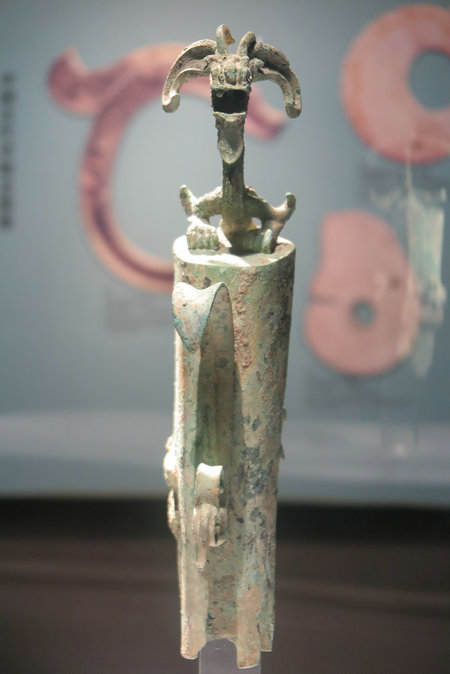 |
|
A bronze dragon column shape artifact. [Photo provided to China Daily] |
The relics, dating back to between 5,000 and 3,000 years, include gold, bronze and jade articles and many of them are on display in the Sanxingdui Museum.
Sanxingdui, which literally means "three star mounds", is so named because the ruins are located in a village where there were three mounds.
The discovery of the Sanxingdui Ruins was accidental.
It seemed to appear from nowhere, says Chen Xiaodan, a leading archaeologist with the Sichuan Provincial Museum in Chengdu who participated in the excavation of the ruins in the 1980s.
In the spring of 1929, Yan Daocheng, a villager in Guanghan, found a stone while digging a ditch in his fields.
Removing the stone, he found a hole beneath it. And in the hole were objects made of jade.